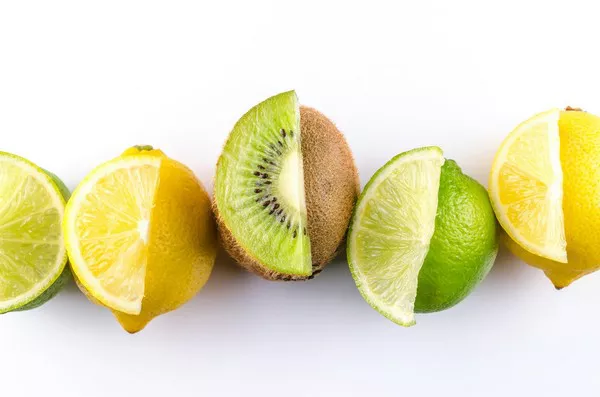Keloids are raised, thickened scar tissues that can form around piercings due to an abnormal healing response. These keloids can be aesthetically displeasing and may cause discomfort or itchiness. If you are dealing with old keloids from piercings and seeking effective removal options, this comprehensive guide will provide you with practical strategies and professional recommendations to help you achieve smoother and scar-free skin.
Understanding Keloids
Keloids are a type of abnormal scar tissue that forms during the healing process. They extend beyond the boundary of the original wound, resulting in a raised, reddish or pinkish, and sometimes itchy formation. Commonly occurring after body piercings, keloids are more prevalent in individuals with darker skin tones or a family history of keloid formation.
Effective Strategies for Keloids
1. Consultation with a Dermatologist
Before attempting any treatment, it is crucial to consult a dermatologist or a qualified healthcare professional who can accurately diagnose and assess the severity of your keloids. They will consider your medical history, examine the keloids, and provide tailored advice based on their expertise.
2. Non-Invasive Treatment Options
Silicone Gel Sheets: Silicone gel sheets are commonly used to manage keloids. These sheets are applied directly to the keloid and should be worn consistently for several months. The pressure and occlusion provided by the sheets can help flatten the keloid over time.
Corticosteroid Injections: Corticosteroid injections involve the administration of a corticosteroid medication directly into the keloid. This treatment reduces inflammation and helps flatten the keloid. Multiple injections may be required, spaced several weeks apart.
Cryotherapy: Cryotherapy involves freezing the keloid using liquid nitrogen. This method destroys the keloid tissue and promotes the growth of healthy skin. However, cryotherapy may cause temporary skin discoloration, and multiple sessions might be necessary.
Laser Therapy: Laser therapy uses high-energy light to break down the keloid tissue and stimulate collagen production. This treatment can help flatten and fade the keloid. Several sessions may be needed to achieve the desired results.
3. Surgical Interventions
Keloid Excision: Keloid excision involves surgically removing the keloid. After the procedure, the wound is closed with sutures or other techniques. To prevent the recurrence of keloids, additional treatments such as corticosteroid injections or radiation therapy may be necessary.
Laser-Assisted Keloid Removal: Laser-assisted keloid removal combines surgical excision with laser therapy. The laser is used to precisely remove the keloid and minimize damage to the surrounding healthy tissue. This approach helps reduce the risk of keloid recurrence.
How Long does it Typically Take to See Results?
The timeline for seeing results when using different treatments for old keloids from piercings can vary depending on various factors, including the severity of the keloid, individual healing response, and the specific treatment method being used. It’s important to note that keloid treatment often requires patience and consistent adherence to the treatment plan. Here is a general overview of the expected timelines for common treatments:
Silicone Gel Sheets: When using silicone gel sheets, results are typically seen gradually over a period of several months. It is recommended to wear the sheets consistently for a minimum of 12 hours a day for at least three to six months. However, some individuals may require longer periods of usage before noticeable improvements are observed.
Corticosteroid Injections: Corticosteroid injections are usually administered in a series of sessions, spaced several weeks apart. Results may become visible after the first few sessions, but significant improvements often occur after three to six months of regular injections. Multiple injections may be necessary, depending on the size and response of the keloid.
Cryotherapy: Cryotherapy involves freezing the keloid with liquid nitrogen. After the treatment, it may take several weeks to months for the keloid to heal and flatten. It’s important to note that the full results of cryotherapy may not be evident until several months after the treatment is completed.
Laser Therapy: Laser therapy typically requires multiple sessions, usually spaced four to six weeks apart. Visible improvements in the keloid’s appearance may be noticed after the first few sessions, but optimal results often take several months to achieve. The number of sessions required will depend on the keloid’s size, location, and individual response to the treatment.
Keloid Excision: Keloid excision, a surgical procedure, involves the removal of the keloid tissue. The initial healing process may take a few weeks, during which the incision site should be cared for as per the surgeon’s instructions. However, complete resolution and improvement of the scar’s appearance may take several months. Additional treatments, such as corticosteroid injections or radiation therapy, may be recommended to prevent keloid recurrence and enhance results.
Laser-Assisted Keloid Removal: Laser-assisted keloid removal combines surgical excision with laser therapy. Similar to keloid excision alone, the initial healing phase may take a few weeks, but noticeable improvements in the keloid’s appearance may require several months. The number of sessions and the time required for optimal results will vary depending on the individual case.
It’s important to remember that each individual’s response to treatment can vary, and the timeline for seeing results may differ. Additionally, some keloids may be more resistant to treatment or may require combination therapies for improved outcomes. Consulting with a dermatologist or healthcare professional who can assess your specific case and provide personalized guidance is crucial for determining the expected timeline for your chosen treatment method.
Overall, treating old keloids from piercings requires patience and consistency. It is essential to follow the prescribed treatment plan, maintain good post-treatment care, and have realistic expectations regarding the duration of treatment and the expected results.
Prevent the Formation of New Keloids
Preventing the formation of new keloids after removing old ones from piercings is crucial to maintain smooth and scar-free skin. While complete prevention may not be guaranteed, implementing the following measures can help minimize the risk of keloid formation:
1. Proper Aftercare
After removing old keloids, it is important to continue practicing good aftercare to promote proper healing and reduce the chances of new keloid formation. Follow these guidelines:
Keep the pierced area clean by gently washing it with a mild saline solution or a gentle, fragrance-free cleanser recommended by your healthcare professional.
Avoid touching the piercing with dirty hands and refrain from changing or removing the jewelry prematurely.
Follow any specific aftercare instructions provided by your dermatologist or piercer.
2. Avoid Trauma and Irritation
Protecting the pierced area from trauma and excessive tension is essential to prevent new keloid formation. Consider the following:
Be cautious during physical activities to avoid accidental pulls or tugs on the piercing.
Remove or replace jewelry with non-irritating alternatives during high-impact or contact sports.
Avoid sleeping on the side with the piercing to minimize pressure and friction.
3. Optimize Healing Environment
Creating an optimal healing environment can aid in preventing new keloids. Consider the following steps:
Maintain proper hygiene in the pierced area, ensuring it remains clean and dry.
Apply a gentle, fragrance-free moisturizer to keep the skin hydrated and supple.
Protect the area from exposure to harsh chemicals or irritants, including perfumes, lotions, and soaps.
4. Sun Protection
Protecting the pierced area from harmful UV rays is crucial, as sun exposure can darken and worsen the appearance of keloids. Follow these guidelines:
Shield the pierced area from direct sunlight, particularly during peak hours.
Use broad-spectrum sunscreen with a high sun protection factor (SPF) to protect the area when exposed to sunlight.
Reapply sunscreen frequently, especially if the pierced area is prone to sweating or contact with water.
5. Regular Follow-ups
Schedule regular follow-up appointments with your dermatologist or healthcare professional. They can monitor the healing process, address any concerns promptly, and provide additional preventive measures or treatments if necessary.
6. Genetic Counseling
If you have a family history of keloid formation or are genetically predisposed to developing keloids, consider genetic counseling. A genetic counselor can provide valuable information and guidance on risk assessment, prevention strategies, and available treatment options.
Conclusion
Removing old keloids from piercings requires a comprehensive approach that combines non-invasive treatments, surgical interventions, and diligent post-treatment care. It is essential to consult a dermatologist or healthcare professional to determine the most suitable treatment plan for your specific case. While complete keloid removal may not always be possible, the right combination of treatments and preventive measures can significantly reduce the appearance and discomfort of keloids, helping you achieve smoother, scar-free skin. Remember, patience and consistency are key, as keloid removal treatments often require multiple sessions and months of ongoing care.
[inline_related_posts title=”Related Topics” title_align=”left” style=”list” number=”3″ align=”none” ids=”715,719,650″ by=”categories” orderby=”rand” order=”DESC” hide_thumb=”no” thumb_right=”no” views=”no” date=”yes” grid_columns=”1″ post_type=”” tax=””]


































